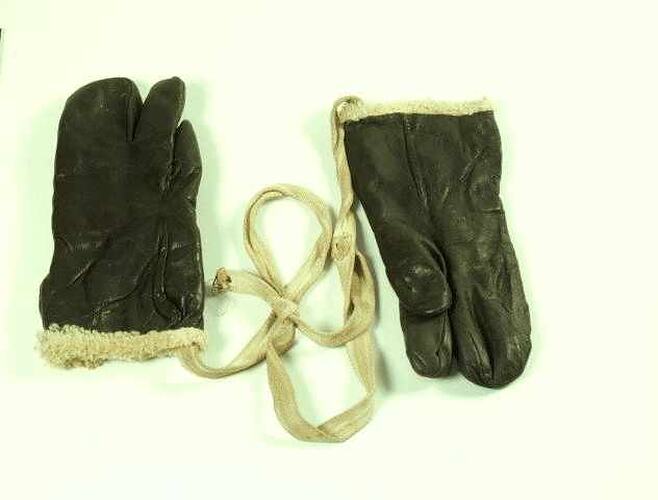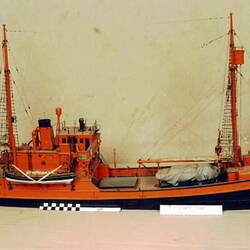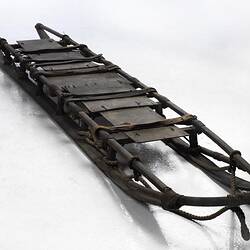Summary
U.S. Army issue trigger finger mittens/gloves, circa 1954. Some of these mittens/gloves were purchased for use by individual ANARE personnel, however they were not in general use by ANARE personnel. These are part of Museum Victoria's collection of artefacts from the post-war era of scientific exploration of Antarctica.
Gloves were not used in Antarctica because the separation of the fingers reduced the insulation. This style of mitten with a separate enclosure for the index finger as well as thumb was called a 'trigger finger' glove/mitten. Outer mittens/gloves such as this pair incorporated tapes which harnessed around the neck, allowing them to be removed and hung loosely around the neck without being blown away.
Physical Description
Pair of brown leather mittens/gloves lined with cream lambswool. There is a separate enclosure for the thumb and the index finger. Attached to the opening of each mitten/glove is a tape which connects the two mittens/gloves together. As a pair, they are known as trigger finger mittens/gloves.
Significance
Protective clothing is extremely significant for Antarctic exploration. In the early days of ANARE, clothing specifically designed for Antarctic conditions was not available. Instead clothing designed for similar conditions, such as mountaineering, skiing and some Army uniforms, needed to be sourced. ANARE relied heavily on Australian, British and US surplus military clothing. Protective clothing for hands was particularly important, and difficult to manufacture. Even after Australian suppliers were found for most Antarctic clothing, gloves were still sourced from overseas suppliers. The US Army Arctic mitts were considered one of the best gloves for Antarctic conditions and are still being used.
More Information
-
Collection Names
-
Collecting Areas
-
Acquisition Information
Donation from Dr Phillip G. Law AC CBE - Australian Antarctic Division, 02 Feb 1993
-
Place Made
-
User
Dr Phillip G. Law AC CBE - Australian Antarctic Division, Antarctica, 1954-1966
-
Classification
-
Category
-
Discipline
-
Type of item
-
Overall Dimensions
16 cm (Length), 34 cm (Height)
-
Keywords



